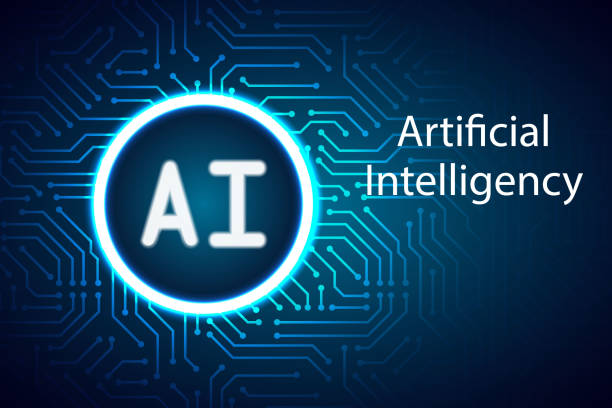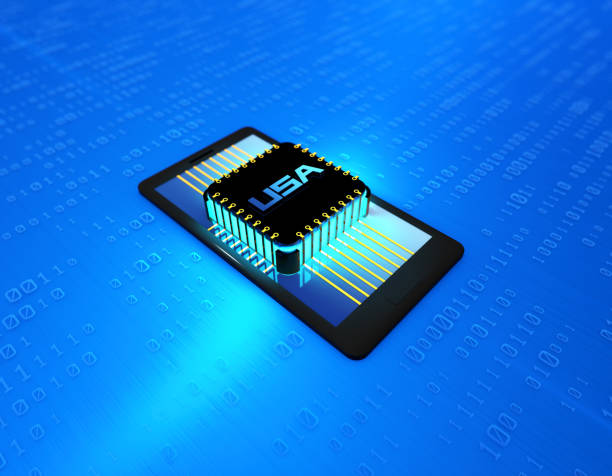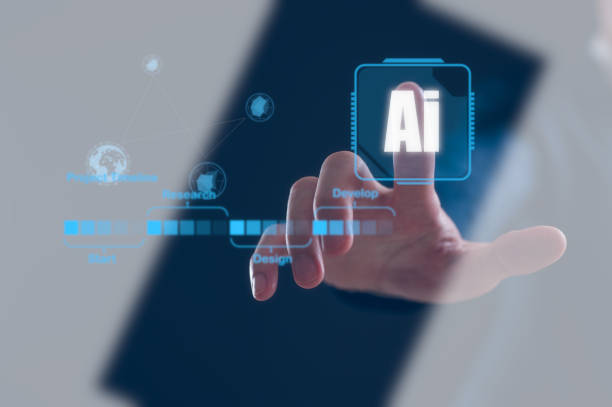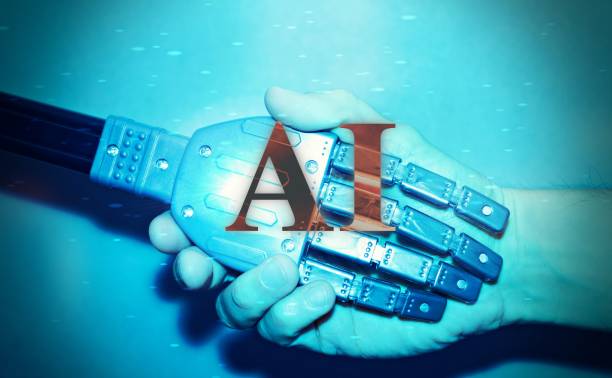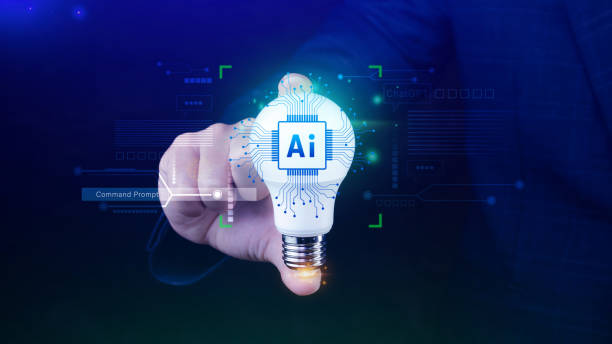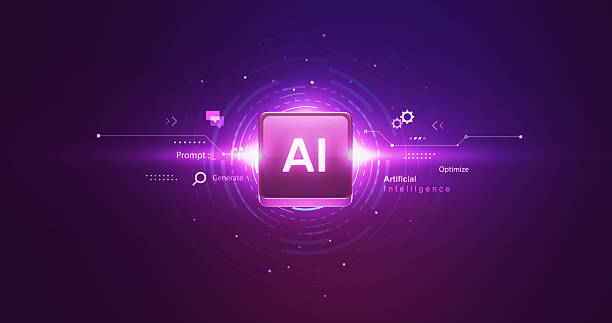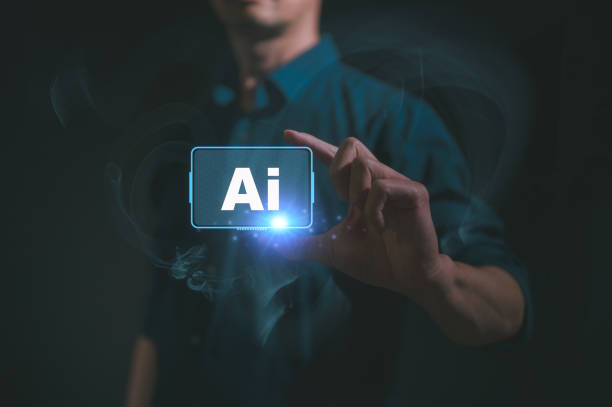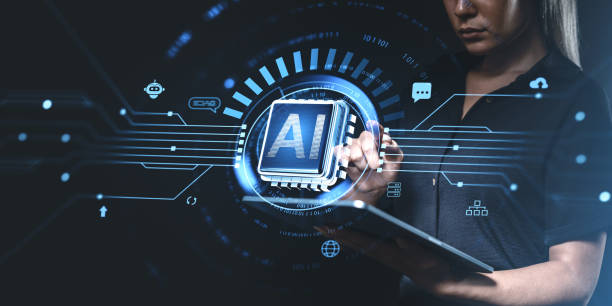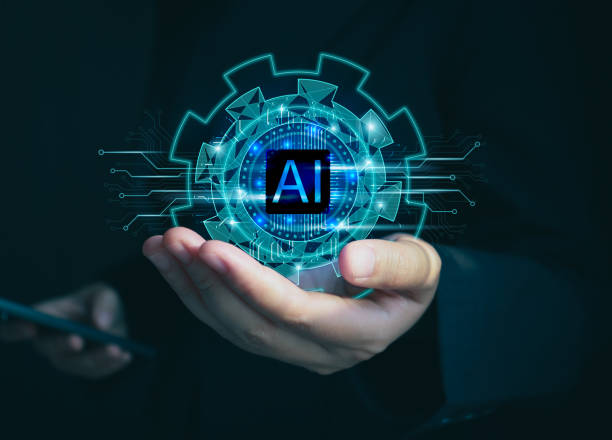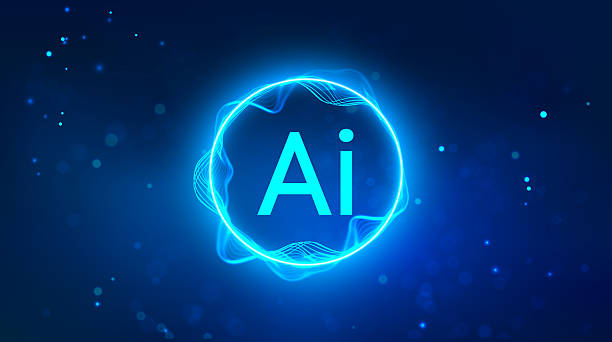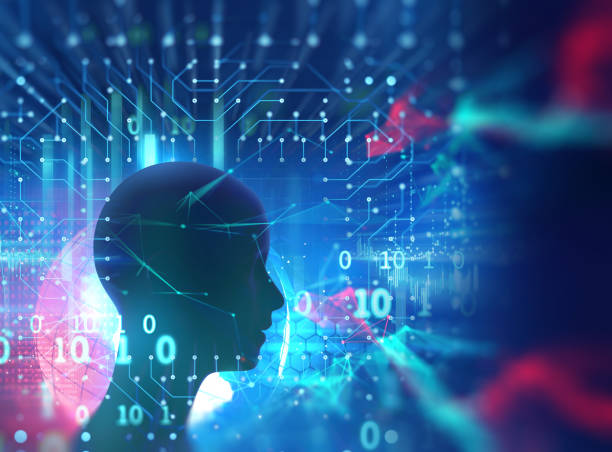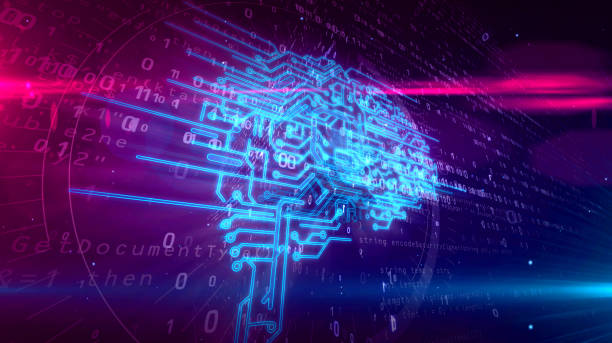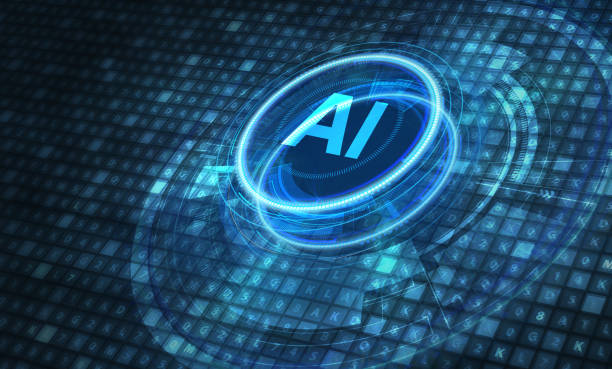What is an Artificial Intelligence Robot? Comprehensive Definition and Applications
In today’s world, the term #Artificial Intelligence (AI) is increasingly heard.
But what exactly is an artificial intelligence robot? In simple terms, an AI robot is a computer program or physical device that, using artificial intelligence algorithms, is capable of performing tasks that usually require human intelligence.
These tasks can include learning, reasoning, problem-solving, understanding natural language, and even creativity.
AI robots have applications in various fields, including customer service, medicine, finance, manufacturing, education, and even art.
These robots can automatically perform repetitive tasks, analyze data, make more informed decisions, and provide personalized experiences for users.
The applications of AI robots are expanding daily and are expected to play a more important role in our lives in the future.
Dreaming of a thriving online store but don’t know where to start?
Rasaweb is your comprehensive e-commerce website design solution.
✅ Attractive and user-friendly design
✅ Increased sales and revenue⚡ Get a free consultation
Main Components of an AI Robot: Examining Architecture and Functionality
An AI robot usually consists of three main components: sensors, processors, and actuators.
Sensors collect information from the surrounding environment (such as cameras, microphones, or temperature sensors).
Processors (usually a computer or cloud system) process this information using artificial intelligence algorithms.
Actuators then execute the processor’s instructions (such as opening a door, answering a question, or moving an arm).
For example, a chatbot built using artificial intelligence can use text sensors (i.e., user text inputs), process these inputs using natural language processors (NLP), and then respond using text actuators (i.e., written responses).
The architecture and functionality of an AI robot vary depending on its application, but the overall goal is always the same: to perform tasks that require human intelligence.
Click here to preview your posts with PRO themes ››
Types of Artificial Intelligence Robots: From Chatbots to Industrial Robots
There are different types of AI robots, each designed for specific purposes.
Some of the most common types of AI robots include:
– Chatbots are conversational robots that can interact with users and answer their questions.
They are commonly used in customer service, marketing, and sales.
– Industrial robots are physical robots that can be used in factories and other industrial environments to perform repetitive and dangerous tasks.
– Medical robots are specialized robots that can assist doctors in surgery, rehabilitation, and other medical fields.
– Home robots are small, portable robots that can be used at home for tasks such as cleaning, elderly care, and entertainment.
Each type of AI robot has its own advantages and disadvantages, and choosing the right type of robot depends on the specific needs and goals of the user.
| Type of AI Robot | Applications | Advantages | Disadvantages |
|---|---|---|---|
| Chatbot | Customer Service, Marketing, Sales | 24/7 Availability, Reduced Costs | Limitations in Understanding Natural Language, Continuous Training Required |
| Industrial Robot | Manufacturing, Warehousing, Logistics | Increased Speed and Accuracy, Reduced Human Risks | High Implementation Costs, Need for Technical Expertise |
| Medical Robot | Surgery, Rehabilitation, Patient Care | High Accuracy, Reduced Human Error, Access to Remote Locations | High Cost, Ethical Issues, Need for Doctor Training |
| Home Robot | Cleaning, Elderly Care, Entertainment | Convenience, Reduced Workload, Increased Security | Cost, Limitations in Capabilities, Need for Maintenance |
Advantages and Disadvantages of Using AI Robots: A Realistic View
The use of AI robots has numerous advantages and disadvantages.
The main advantages include increased productivity, reduced costs, improved accuracy, and 24/7 service provision.
AI robots can automatically perform repetitive and time-consuming tasks, which increases productivity and reduces labor costs.
Also, AI robots can analyze data more accurately and make more informed decisions.
However, the use of AI robots also has disadvantages, including high implementation costs, the need for technical expertise, concerns about job losses, and ethical issues related to privacy and data security.
It is important to carefully evaluate the advantages and disadvantages before deciding to use an AI robot.
Does your company website perform as well as your brand deserves? In today’s competitive world, your website is your most important online tool. Rasaweb, a specialist in designing professional corporate websites, helps you to:
✅ Attract customer credibility and trust
✅ Convert website visitors into customers
⚡ Get a free consultation!
The Future of AI Robots: Key Trends and Predictions
The future of AI robots is bright and full of potential.
It is expected that in the coming years, we will see significant advances in the field of artificial intelligence and robotics.
Some of the key trends that will shape the future of AI robots include:
– Deep Learning is a powerful method for training AI robots that allows them to learn complex patterns and relationships in data.
– Natural Language Processing (NLP) allows robots to understand and communicate with human language.
– Computer Vision allows robots to see and interpret images and videos.
– Soft Robotics allows robots to be more flexible and adaptable to their environment.
With the advancement of these technologies, AI robots will be able to perform more complex tasks and play a role in more areas of our lives.
It is predicted that in the future, AI robots will become very common in areas such as self-driving cars, healthcare, education, and manufacturing.
Ethical and Social Challenges of AI Robots: Examining Important Issues
The development and use of AI robots is associated with several ethical and social challenges.
One of the most important of these challenges is the concern about job losses.
With the increasing use of AI robots in various industries, there is a possibility that many existing jobs will be lost.
Governments and companies need to prepare for this challenge and develop programs to retrain and support affected workers.
Another challenge is issues related to privacy and data security.
AI robots need to collect and process large amounts of data to perform their tasks.
This data can include sensitive personal information, so maintaining the privacy and security of this data is of paramount importance.
Also, issues related to discrimination and bias in AI algorithms should also be considered.
AI algorithms may be trained based on historical data that contains certain biases.
These biases can lead to unfair and discriminatory decisions.
How to Build an AI Robot: A Step-by-Step Guide
Building an AI robot can be a challenging but very rewarding project.
To build an AI robot, you need knowledge and skills in various fields, including programming, mathematics, statistics, and artificial intelligence.
The main steps in building an AI robot are:
1.
Define the problem The first step is to accurately define the problem that you want your AI robot to solve.
2.
Collect data The AI robot needs data to learn.
You need to collect data related to your problem.
3.
Choose an algorithm You need to choose an appropriate AI algorithm to solve your problem.
4.
Train the model Using the collected data, you need to train your AI model.
5.
Evaluate the model After training the model, you need to evaluate it to make sure it works correctly.
6.
Deploy the model After evaluating the model, you can deploy it in a real-world environment.
| Stage | Description | Required Tools and Technologies |
|---|---|---|
| Define the problem | Precisely define the problem that the AI robot should solve. | Research, Requirements Analysis |
| Collect Data | Collect data related to the problem. | Databases, APIs, Web Scraping |
| Choose an algorithm | Choose a suitable AI algorithm. | Machine Learning, Deep Learning, Neural Networks |
| Train the model | Train the AI model using data. | Python, TensorFlow, PyTorch |
| Evaluate the model | Evaluate the performance of the model. | Evaluation Metrics, Testing Tools |
| Deploy the model | Deploy the model in a real environment. | Cloud platforms, APIs, Docker |
Tools Needed for AI Robot Development: Introduction and Review
To develop an AI robot, you need various tools, including:
– Programming languages Python is one of the most popular programming languages for AI development.
Other languages like Java and C++ can also be used.
– AI Libraries TensorFlow, PyTorch, and scikit-learn are popular libraries that provide various tools and functions for AI development.
– Cloud Platforms AWS, Google Cloud, and Azure are cloud platforms that offer a variety of services for AI robot development and deployment.
– Development environments IDEs like Jupyter Notebook and PyCharm are popular development environments that provide various tools for writing and running code.
Choosing the right tools depends on your specific needs and skills.
Don’t have a company website yet and are missing out on online opportunities? With professional company website design by Rasaweb,
✅ Double your business credibility
✅ Attract new customers
⚡ Free consultation for your company website!
Successful Examples of AI Robots in the Real World: Reviewing Applications
AI robots are currently used in many industries.
Some successful examples include:
– Siri and Alexa are voice assistants that use artificial intelligence to answer users’ questions, perform tasks, and provide information.
– Self-driving cars are cars that can drive without human intervention using artificial intelligence.
– Face recognition is a technology that uses artificial intelligence to recognize and identify people’s faces.
– Recommenders are systems that use artificial intelligence to recommend products, movies, and other items to users.
These are just a few examples of the applications of AI robots in the real world.
Important Points in Designing and Developing AI Robots: Increasing Efficiency and Effectiveness
To design and develop an efficient and effective AI robot, you should pay attention to the following points:
– Define goals accurately Before starting design and development, you must accurately define your goals.
– Choosing the right data The data used to train the model should be relevant, accurate, and comprehensive.
– Choosing the right algorithm The algorithm used should be suitable for solving your specific problem.
– Optimize the model The model should be continuously optimized to improve its performance.
– Testing and evaluation The model should be tested and evaluated regularly to ensure it is working correctly.
By following these tips, you can design and develop an efficient and effective AI robot.
#Robotics #Artificial_Intelligence #Machine_Learning
Frequently Asked Questions
| Question | Answer |
|---|---|
| What is an AI robot? | It is a robot that uses artificial intelligence capabilities to understand the environment, reason, learn, and make decisions in order to perform complex tasks independently. |
| What is the main difference between a regular robot and an AI robot? | AI robots can learn and adapt to their environment, while regular robots usually operate based on fixed and predetermined plans. |
| In what fields are AI robots used? | In fields such as industry (production lines), medicine (robotic surgery), services (customer support, smart vacuum cleaners), exploration (space and underwater), and entertainment. |
| How do AI robots learn? | They acquire new skills through machine learning (Machine Learning) and deep learning (Deep Learning) algorithms, by analyzing large data and identifying patterns. |
| Can AI robots have feelings? | Currently, no. They can identify or simulate emotions, but they do not have a real experience of emotions like humans. |
| What are the most important advantages of using AI robots? | Increased productivity, reduced human error, performing dangerous or repetitive tasks, and providing new and efficient services. |
| What are the challenges in developing AI robots? | The need for large amounts of high-quality data, the complexity of algorithms, ethical issues, cybersecurity, and high research and development costs. |
| Are AI robots dangerous to humans? | By following the principles of safe design and ethical regulations, no. Concerns are more related to social and economic impacts such as changes in the labor market. |
| What is an example of an AI robot in everyday life? | Smart vacuum cleaners (such as Roomba) that automatically map and clean the house, or smart voice assistants (such as Siri and Alexa). |
| How is the future of AI robots predicted? | They are expected to become smarter, more autonomous and able to interact more complexly with humans, and play a more prominent role in industry, medicine, transportation and everyday life. |
And other services of Rasa Web advertising agency in the field of advertising
Smart Brand Identity: A combination of creativity and technology to increase sales through attractive user interface design.
Smart Advertising Campaign: A creative platform to improve customer acquisition by customizing the user experience.
Smart Link Building: A combination of creativity and technology to attract customers through proprietary programming.
Smart Google Ads: Transform campaign management with the help of intelligent data analysis.
Smart Sales Automation: A fast and efficient solution to increase click-through rates with a focus on marketing automation.
And more than hundreds of other services in the field of internet advertising, advertising consulting and organizational solutions
Internet Advertising | Advertising Strategy | Advertorial
Sources
Artificial Intelligence Robots and Their Applications
,Applications of Smart Robots with Numerous Advances
,Will Smart Robots Replace Tasks in Life
,How Can AI Robots Transform Marketing?
? Are you ready to boost your business in the digital space? Afarin Rasaweb Digital Marketing Agency helps you achieve your online marketing goals and have a prominent and successful presence on the Internet by providing a wide range of professional services, including e-commerce website design and comprehensive SEO strategies.
📍 Tehran, Mirdamad Street, next to the Central Bank, Kazerun Jonoubi Alley, Ramin Alley No. 6

